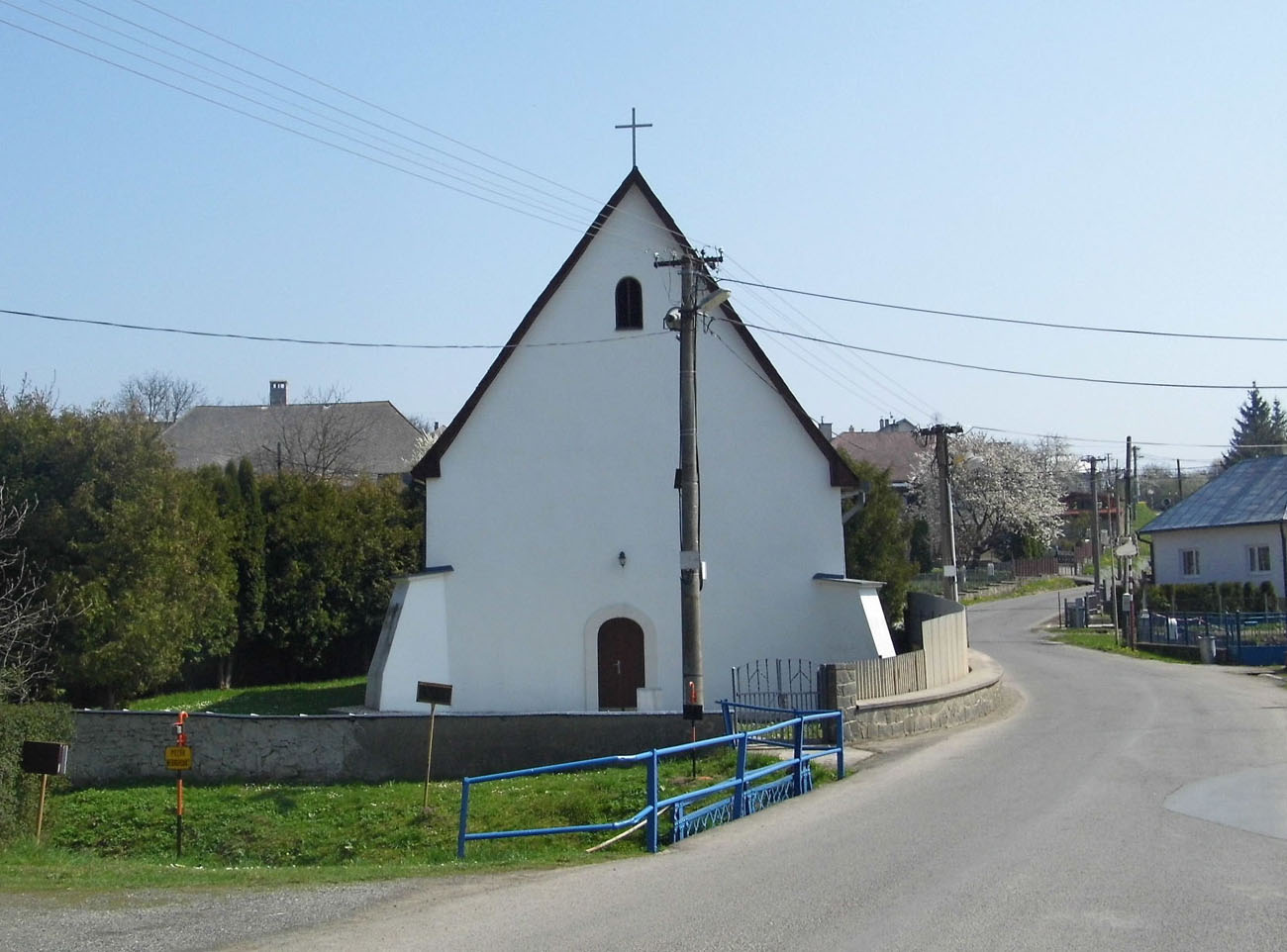History
The church in the village of Chmeľovec (originally called Komloš, and in 1251 recorded as Cumlous) was built around the middle of the 13th century. Perhaps the brothers German, Renald and Iwud contributed to its construction, who at that time had local goods granted by King Bela IV. In the 30s of the 14th century, a parish priest named Lukáš worked in the church, and the church itself was to be called St. Cosmas and Damian. In the first quarter of the fifteenth century, the interior of the church was decorated with frescoes. During the Reformation, the building passed into the hands of the Evangelicals. In 1967, the monument was renovated due to numerous cracks and the risk of collapse, but unfortunately, during these works, the medieval polychromes were destroyed. The building was then reinforced with buttresses.
Architecture
The church was erected as a simple, small building with a rectangular, aisleless nave and chancel in the form of a horseshoe apse. The building did not had the tower or even the sacristy. Its interior was probably illuminated by small windows with semicircular heads, while a slightly more unusual cylindrical opening was pierced in the eastern wall of the apse. Traditionally, for the medieval period, the entire northern façade was devoid of openings. All facades were simple, devoid of decorations or divisions, the walls were not supported by any buttresses. The entrance was placed only in the middle of the western wall.
The interior of the church in the Gothic period was covered with wall polychromes, placed, among others, in the apse, on the rood arch and the northern wall of the nave. They were characterized by vivid colors and were clearly the work of a traveling artist, as similar styling was not used anywhere else in the region. The figure of the apostle was placed in the apse, probably originally surrounded by other apostles. Under them there was a painted curtain with decoration, and on the inside of the rood arch there was an image of St. Bartholomew and a Latin dedicatory inscription. On the north wall of the nave there were scenes from the legend of St. Ladislaus with the figure of a saint on a horse and a Cuman. An important element of the paintings was the wide use of various decorative elements.
Current state
The church has retained the original, 13th-century spatial arrangement, but it has not avoided several significant modifications in the early modern and modern period. Due to static problems, the walls of the nave were supported with buttresses, the windows were enlarged and closed with segmental arches, and the interior was redesigned (among other things, a gallery was inserted in the western part of the nave). Of the late Romanesque architectural details, the oculus in the apse has been preserved.
bibliography:
Kotorová-Jenčová M., Výskum exteriéru kostola sv. Michala v Chmeľovci, “Avans”, Nitra 2015.
Súpis pamiatok na Slovensku, zväzok prvý A-J, red. A.Güntherová, Bratislava 1967.

